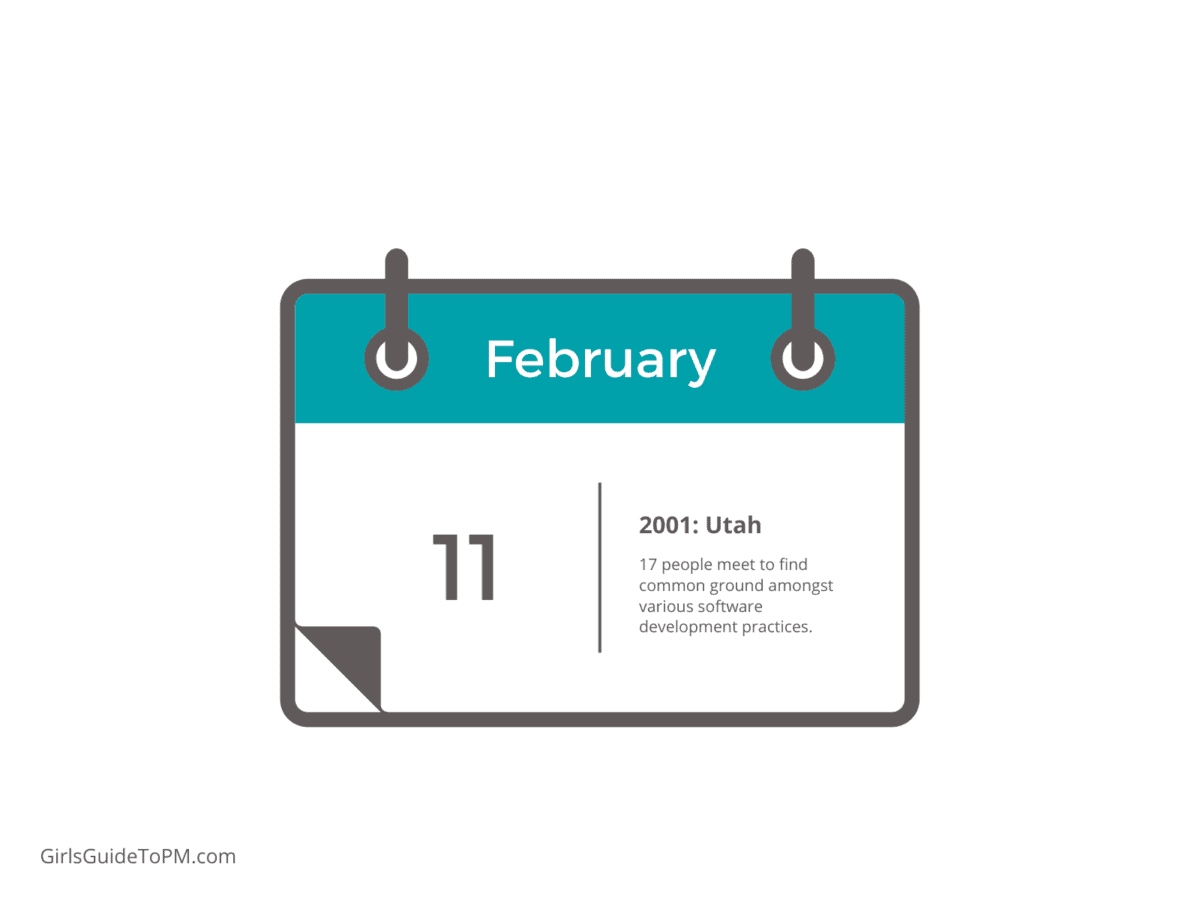20 Years of The Agile Manifesto
Can you believe the
What astounds me is that it’s in my lifetime: in my working career, actually.
Project management has changed a lot since I started working:
- We’ve got better collaboration tools
- We’ve adapted to remote working as the norm, not an exception
- There is greater awareness of the benefits of diverse teams
- More project teams include overseas colleagues and suppliers as the world gets smaller
- Companies can no longer mandate women to wear high heels at work (thank you, Equality Act 2010) – unless the same provision is also expected of male workers.
And yet…
The
That meeting in the Aspen Room at The Lodge in Snowbird, Utah, certainly has a lot to answer for.

Celebrating 20 years
The
It has been 20 years since the
It seems like every tool now includes an option to display work on Kanban boards, and that’s just the start of it.
I’m not an agilist (at all) but I use Kanban boards for my own task planning, and concepts like iterations, progressive elaboration and regular lessons learned meetings, which are small ways in which my own work has evolved and benefitted through an understanding of
What does the Agile Manifesto say?
The Agile Manifesto says:
We are uncovering better ways of developing software by doing it and helping others do it. Through this work we have come to value: Individuals and interactions over processes and tools Working software over comprehensive documentation Customer collaboration over contract negotiation Responding to change over following a plan That is, while there is value in the items on the right, we value the items on the left more.
The Agile Manifesto Authors
| Kent Beck Mike Beedle Arie van Bennekum Alistair Cockburn Ward Cunningham Martin Fowler | James Grenning Jim Highsmith Andrew Hunt Ron Jeffries Jon Kern Brian Marick | Robert C. Martin Steve Mellor Ken Schwaber Jeff Sutherland Dave Thomas |
this declaration may be freely copied in any form,
but only in its entirety through this notice.
The Manifesto gave this way of working a name, a community: something people could get behind. And people really did.
The 12 Principles behind the Agile Manifesto
The Manifesto is a short summary of what it means to hold certain values and work in
We follow these principles:
Our highest priority is to satisfy the customer through early and continuous delivery of valuable software. Welcome changing requirements, even late in development.Agile processes harness change for the customer's competitive advantage. Deliver working software frequently, from a couple of weeks to a couple of months, with a preference to the shorter timescale. Business people and developers must work together daily throughout the project. Build projects around motivated individuals. Give them the environment and support they need, and trust them to get the job done. The most efficient and effective method of conveying information to and within a development team is face-to-face conversation. Working software is the primary measure of progress.Agile processes promote sustainable development. The sponsors, developers, and users should be able to maintain a constant pace indefinitely. Continuous attention to technical excellence and good design enhances agility. Simplicity--the art of maximizing the amount of work not done--is essential. The best architectures, requirements, and designs emerge from self-organizing teams. At regular intervals, the team reflects on how to become more effective, then tunes and adjusts its behavior accordingly.
Is the Agile Manifesto still relevant?
What dropped out of the meeting of the Snowbird 17 was an understanding of what was common between all the different ways of getting software development done. It was the bedrock of what it meant to be
But on top of that, people were running projects in a range of different ways. And if anything, the
We’ve got ways of scaling
It seems like
However, the Manifesto still speaks to people. It’s a benchmark; a goal for what we can achieve if we use the right tools in the right situation. It’s more relevant now than ever, perhaps, because it provides the boundaries of what good looks like for getting work done – following principles of simplicity and reflection that scientists have used for thousands of years.
But is it relevant for non-software projects?
We can’t escape the fact that the Manifesto started life as an approach for the development of software.
From traditional software delivery to continuous software delivery, the key values underpin the processes that help get work done.
However, an
I don’t see how you could deliver a large construction project while being
Just the fact that the Manifesto doesn’t talk about people as “resources” is something that many project leaders could learn from.
Project managers still have a place
The role of the project manager doesn’t really exist in many
I definitely don’t believe that project managers are the dodo of the agile age. We still have a lot to contribute – and a lot to learn from colleagues using
Here’s to the next 20 years: I can’t wait to see what evolutions are coming.

